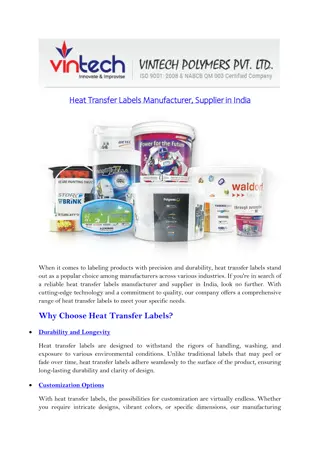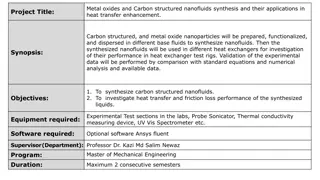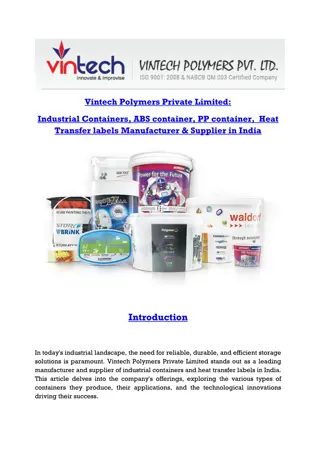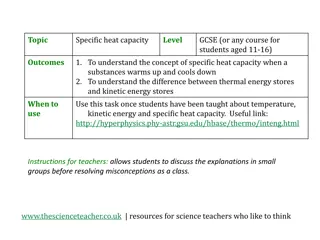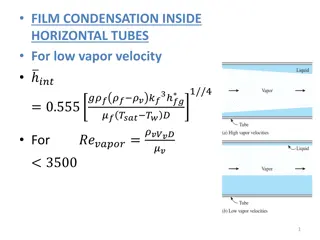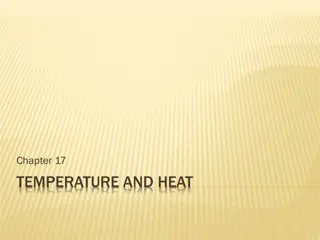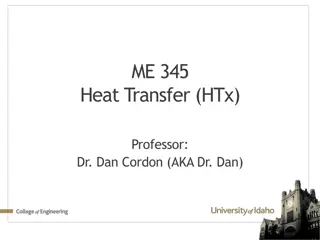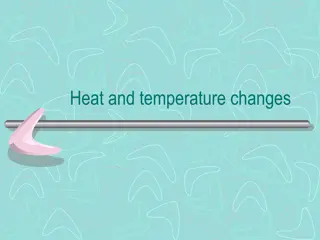Understanding Specific Heat Capacity and its Importance in Heat Transfer
Discover the key differences between heat and temperature, grasp the concept of specific heat capacity, how it is calculated, and its practical applications in energy transfer processes. Be cautious with hot objects like an apple pie to avoid burns. Explore how specific heat capacity influences the temperature change in materials, and learn to calculate it using the provided equation. Differentiate materials based on their specific heat capacities and understand their roles in heat absorption or insulation.
Download Presentation

Please find below an Image/Link to download the presentation.
The content on the website is provided AS IS for your information and personal use only. It may not be sold, licensed, or shared on other websites without obtaining consent from the author. Download presentation by click this link. If you encounter any issues during the download, it is possible that the publisher has removed the file from their server.
E N D
Presentation Transcript
Specific Heat Capacity Objectives What is the difference between heat and temperature? What is specific heat capacity? How is it calculated? How is it useful? Why do you have to be careful with one of these?
Caution: Hot Apple Pie! Have you bitten into an apple pie and burnt your mouth? The outside is warm but the inside is very hot. It was all cooked together so why does this happen? It s because the filling has a higher heat capacity than the pastry.
Heat vs Temperature What is the difference? Watch this video and write down the definitions. HEAT: _____________________________ TEMPERATURE:_____________________ A measure of how hot something is The thermal energy contained in an object When heat energy is transferred to an object, its temperature will increase
http://www.youtube.com/watch?v=D3CwpfBzF94 What is specific heat capacity? This is a measure of how much energy a material can store. It is the energy needed to raise the temperature of 1kg of a material by 1oC. It is measured in J/kg oC If we heated these materials for 10 minutes , which would get hottest? water copper limestone
SHC of different materials 43oC 82oC 65oC The copper became hottest because it has the lowest SHC. The water has the highest SHC as it absorbed the energy without becoming very hot.
Different materials Material Specific heat capacity (J/kg oC) 1. Which would get hottest? 1kg of glass or 1kg of iron? 2. Which material is used to heat radiators? Why? 3. What other materials could be used in heaters? 4. Which would feel colder after 1 hour in the fridge limestone or copper? Water 4200 Oil 2000 Limestone 910 Glass 840 Iron 460 Copper 390
Calculating specific heat capacity Can be calculated using this equation: E = m x x c E is the energy transferred in joules, J m is the mass of the substances in kg ( theta ) is the temperature change in degrees Celsius, C c is the specific heat capacity in J / kg C
Rearranging the equation: E E E = m = c = c x m c x c x Energy transferred (J) temperature change oC specific heat capacity J/kg oC mass kg x x
Rearranging the equation: E E E = m = c = c x m c x c x Energy transferred (J) temperature change oC specific heat capacity J/kg oC mass kg x x
Rearranging the equation: E E E = m = c = c x m c x c x Energy transferred (J) temperature change oC specific heat capacity J/kg oC mass kg x x
Examples show your working E = m x x c 1. For example, how much energy must be transferred to raise the temperature of 2 kg of water from 20 C to 30 C? 2. How much energy is needed to raise the temperature of 1 kg of glass from 30 C to 45 C? 3. How much energy is needed to increase the temperature of 500 g of lead from 20 C to 45 C? The specific heat capacity of lead is 128 J/kg C.
Frying an egg in paper Can you fry an egg in newspaper? Watch the clip. Can you explain how it works?



